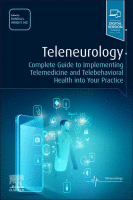
Telehealth services have been used for years to provide healthcare to underserved communities such as patients in rural settings. As defined by the Health Services and Resources Administration, telehealth is the use of electronic information and telecommunication technologies to support long-distance clinical health care, patient and professional health-related education, health administration, and public health. While telehealth and more specifically telemedicine is not new, the COVID-19 pandemic created an environment where remote clinical services were needed more than ever before. Practitioners made use of video chat programs with patients in place of in-person office visits to help prevent the spread of the COVID-19 virus.
Due to the need to keep patients safe while providing healthcare during the health crisis, federal and state government regulators made changes to telehealth policies allowing a greater number of people to make use of these types of services. Though some rule changes are temporary, other changes to policy may be permanent as the increased use of telehealth brought to light the value of remote clinical services in a broad range of medical fields. Still, along with the realization that telehealth tools help patients, some consider concerns and issues that may need to be addressed in order to ensure telehealth and telemedicine is used responsibly and that underserved patients continue to benefit from its use.
Ebooks
 Telehealth Nursing : Tools and Strategies for Optimal Patient Care (2016 eBook) Including all of the information necessary for safe, competent practice, this is a practical, hands-on educational and training resource for nurses working in telephonic health care settings. –from book description
Telehealth Nursing : Tools and Strategies for Optimal Patient Care (2016 eBook) Including all of the information necessary for safe, competent practice, this is a practical, hands-on educational and training resource for nurses working in telephonic health care settings. –from book description Telemedicine in Low-Resource Settings (2015 eBook)
Telemedicine in Low-Resource Settings (2015 eBook) Telemedicine, Telehealth and Telepresence : Principles, Strategies, Applications, and New Directions (2020 eBook) The aim of this book is to bring all aspects of telemedicine and e-health to the reader, in a simple, make-sense approach, in one tome. –from book description
Telemedicine, Telehealth and Telepresence : Principles, Strategies, Applications, and New Directions (2020 eBook) The aim of this book is to bring all aspects of telemedicine and e-health to the reader, in a simple, make-sense approach, in one tome. –from book description Teleneurology : Complete Guide to Implementing Telemedicine and Telebehavioral Health into your Practice(2022 eBook, includes videos)
Teleneurology : Complete Guide to Implementing Telemedicine and Telebehavioral Health into your Practice(2022 eBook, includes videos) Telerehabilitation : Principles and Practice (2022 eBook, includes videos) …provides quick access to information on common rehabilitation diagnoses and practices and how you can best use telerehabilitation to provide timely, effective care to every patient. --Publisher's description.
Telerehabilitation : Principles and Practice (2022 eBook, includes videos) …provides quick access to information on common rehabilitation diagnoses and practices and how you can best use telerehabilitation to provide timely, effective care to every patient. --Publisher's description. The Role of Telehealth in an Evolving Health Care Environment: Workshop Summary (2012 eBook, includes chapter 4: Challenges in Telehealth)
The Role of Telehealth in an Evolving Health Care Environment: Workshop Summary (2012 eBook, includes chapter 4: Challenges in Telehealth)Articles
- How UW Medicine Is Making Telemedicine Accessible (UW Medicine, The Huddle article 08/15/2022)
- Pandemic shows benefits of telehealth for certain patients (UW iSchool article 03/31/2022)
- Telehealth Expansion During the COVID-19 Pandemic and Beyond (American Journal of Nursing article 07/2022)
- What NASA's use of telemedicine in space can teach providers on the ground (American Health Line. First Look, 2017)
- Patients say telehealth is OK, but most prefer to see their doctor in person (NPR article 10/18/2021)
- Interest in and Concerns About Telehealth Among Adults Aged 50 to 80 Years (American Journal of Managed Care article 10/11/2021)
Videos
- Telehealth 101 for Mental Health Professionals : Best Practices for the Basics and Beyond (2020, 170 minutes) Watch this video to learn: The basics of telehealth components. The basic telehealth requirements. Top ten tips to provide these services in an ethical and competent manner. –from video description
Podcasts
- My Telehealth Podcast (NPR South Carolina)
- The Transformer: Episode 7: Telehealth: Moving Knowledge, not People (UW Medicine podcast transcript)
Image credit: National Public Radio. (2022). Patients say telehealth is OK, but most prefer to see their doctor in person. Retrieved September 2, 2022 from NPR.